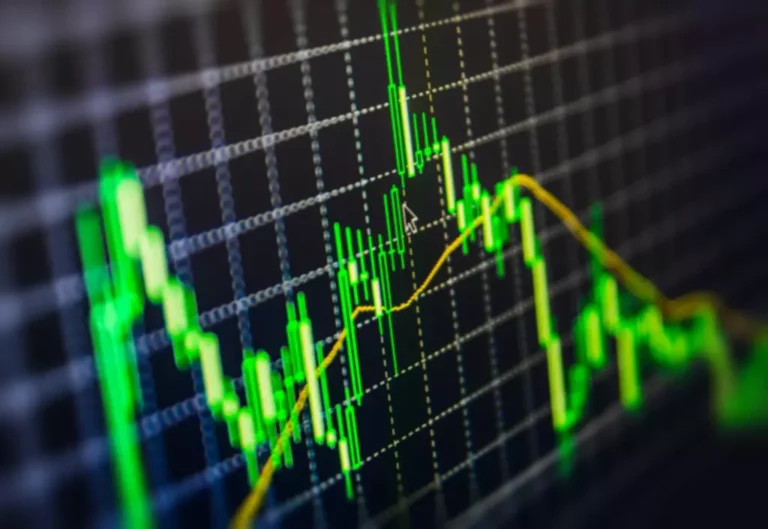Content
First things first, it’s important to understand what the terms passive investing and active investing actually mean. An investor should always do their own research before making any investments. You could also avoid treating the active vs. passive investing debate as a forced dichotomy and select the best funds in either category that suit your goals. • Active investing relies on human intelligence and skill to capture market upsides, while passive investing relies on algorithms to track market what is one downside of active investing returns.
Which of these is most important for your financial advisor to have?
For example, the largest 500 companies in the United States are tracked via the S&P 500 index. This https://www.xcritical.com/ is why you may hear passive investing referred to as index investing. Passive investing is a strategy that focuses on having a long-term investment outlook and remaining invested through the ups and downs of the markets and the economy. Here’s what you need to know about both strategies and why passive investing may be your key to better investment outcomes. Alternatively, if you seek the potential for returns that outpace those offered by the broad market and other indexes, then you may wish to consider and include active ETFs in your portfolio. The articles and research support materials available on this site are educational and are not intended to be investment or tax advice.

Active vs. Passive ETF Investing: An Overview

An active fund manager’s experience can translate into higher returns, but Non-fungible token passive investing, even by novice investors, consistently beats all but the top players. They can be active traders of passive funds, betting on the rise and fall of the market, rather than buying and holding like a true passive investor. Conversely, passive investors can hold actively managed funds, expecting that a good money manager can beat the market.

Definition of Passive Investment Management
Hundreds of other indexes exist, and each industry and sub-industry has an index comprised of the stocks in it. An index fund – either as an exchange-traded fund or a mutual fund – can be a quick way to buy the industry. In 2023, for instance, 60% of large-cap U.S. actively managed equity funds underperformed the S&P 500, according to a scorecard report from the S&P Dow Jones indexes.
Active Investing in Mutual Funds
Ally Invest Advisors and Ally Invest Securities are wholly owned subsidiaries of Ally Financial Inc. Securities products are NOT FDIC INSURED, NOT BANK GUARANTEED and MAY LOSE VALUE. Prospective investors should confer with their personal tax advisors regarding the tax consequences based on their particular circumstances. If you’re someone who prefers a hands-off approach or wants to keep things simple, passive investing might be right for you.
Recognizing that your investments will experience ups and downs can help you maintain a long-term perspective. It is essential to assess your emotional resilience to handle market volatility. Make sure you are comfortable with the possibility of short-term losses. Overall, actively managed funds did little to change their long-term track record. About 29% of them survived and beat their average indexed peer over the decade through June 2024.
If you want to buy and hit the snooze button, you can use a robo-advisor. They use computer algorithms and software to choose investments that align with your goals. You can also get the best of both worlds as many robo-advisors offer both index funds and ETFs.
Successful passive investors keep their eye on the prize and ignore short-term setbacks—even sharp downturns. Because passive investments don’t rely on market forecasts, company research, or active trading, their costs are incredibly low and often a fraction of the cost of active investments. While the ability to trade throughout the day can be a boon for certain investors, such trading can result in unnecessary transaction costs. That is a fundamental difference between the strategies of passive and active ETF investing. Passive investment management, on the other hand, requires less time and effort as the portfolio is designed to track the performance of a benchmark index.
Some are broad-based, like those that track the S&P 500 or Russell 3000, while others are narrow, like only applying to a specific sector. Passive investing doesn’t mean that you don’t care about your investments — being passive is just a strategy that essentially says markets are efficient, and over the long term, it’s hard to beat the average net of fees. There’s more to the question of whether to invest passively or actively than that high level picture, however.
- While passive investing is more prevalent among retail investors, active investing has a prominent place in the market for several reasons.
- Only 11% of those surveyed expressed that timing the market is more important to achieve high returns.
- Just 20% of them survived and beat their average passive rival over the decade through June 2024.
- An index fund offers a simple and easy way to invest in a chosen market because it seeks to track an index.
- With that in mind, let’s take a closer look at the nitty-gritty details of passive versus active investing.
Get instant access to video lessons taught by experienced investment bankers. Learn financial statement modeling, DCF, M&A, LBO, Comps and Excel shortcuts. Thus, downturns in the economy and/or fluctuations are viewed as temporary and a necessary aspect of the markets (or a potential opportunity to lower the purchase price – i.e. “dollar cost averaging”). The latter is more representative of the original intent of hedge funds, whereas the former is the objective many funds have gravitated toward in recent times. Equity securities may fluctuate in response to news on companies, industries, market conditions and general economic environment. While S&P 500 index funds are the most popular, index funds can be constructed around many categories.
And our partners can never pay us to guarantee favorable reviews (or even pay for a review of their product to begin with). Because index funds simply track an index like the S&P 500 or Russell 2000, there’s really no mystery how the constituents in the fund are selected nor the performance of the fund (both match the index). • Passive investing may be less tied to market volatility, while active investing is more vulnerable to market shocks.
Only a small percentage of actively managed mutual funds do better than passive index funds. You’d think a professional money manager’s capabilities would trump a basic index fund. If we look at superficial performance results, passive investing works best for most investors. Study after study (over decades) shows disappointing results for active managers. Unfortunately, market timing and stock selection strategies fail to provide the investment returns that many seek. The majority of professional money managers that actively trade stocks or bonds fail to generate returns that are better than the index they are trying to beat.
While ETFs have staked out a space for being low-cost index trackers, many ETFs are actively managed and follow various strategies. Others believe investing broadly, managing risk, and keeping fees and taxes as low as possible – a passive approach – is better. Some believe stock selection and market timing – known as active investing – is the right approach. This is why active investing is not recommended to most investors, particularly when it comes to their long-term retirement savings. If the ETF is trading at a premium to the value of the underlying shares, investors can short the ETF and purchase shares of stock on the open market to cover the position.

